What'sNEW Archives, November-December 2000
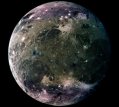 December 17: Ganymede appears to have an ocean miles below its surface. At a meeting of the American Geophysical Union in San Francisco, Margaret Kivelson of the University of California-Los Angeles said that magnetic readings from the Galileo spacecraft were best explained by a melted layer of salty water several miles thick, beginning within 120 miles of Ganymede's surface. Other scientists observed what appears to be salt left on the surface by evaporated salty water. And high resolution images show bright smooth places that may have been wet relatively recently. Radioactivity could contribute heat to keep the ocean from freezing, and Ganymede still has a molten core. Two other moons of Jupiter, Europa and Callisto, are already believed to have concealed oceans. Now Ganymede, Jupiter's largest moon, joins the group.
December 17: Ganymede appears to have an ocean miles below its surface. At a meeting of the American Geophysical Union in San Francisco, Margaret Kivelson of the University of California-Los Angeles said that magnetic readings from the Galileo spacecraft were best explained by a melted layer of salty water several miles thick, beginning within 120 miles of Ganymede's surface. Other scientists observed what appears to be salt left on the surface by evaporated salty water. And high resolution images show bright smooth places that may have been wet relatively recently. Radioactivity could contribute heat to keep the ocean from freezing, and Ganymede still has a molten core. Two other moons of Jupiter, Europa and Callisto, are already believed to have concealed oceans. Now Ganymede, Jupiter's largest moon, joins the group.
 Solar System's Largest Moon Likely Has a Hidden Ocean, by Guy Webster, JPL, NASA, 16 December 2000. Solar System's Largest Moon Likely Has a Hidden Ocean, by Guy Webster, JPL, NASA, 16 December 2000.
 Jupiter moon may have a saltwater ocean Jupiter moon may have a saltwater ocean , Reuters, CNN.com, 17 December 2000.
 Moon of Jupiter May Conceal an Unusual Ocean, by Usha Lee McFarling, Los Angeles Times, 17 December 2000. Moon of Jupiter May Conceal an Unusual Ocean, by Usha Lee McFarling, Los Angeles Times, 17 December 2000.
 Kenneth Chang, "Third Moon of Jupiter May Have Sea Under Its Ice" [text], The New York Times, 17 December 2000. Kenneth Chang, "Third Moon of Jupiter May Have Sea Under Its Ice" [text], The New York Times, 17 December 2000.
 Life on Europa... has links to WhatsNEW on Jupiter's and other moons. Life on Europa... has links to WhatsNEW on Jupiter's and other moons.
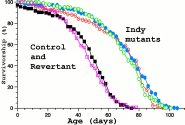 December 15: Mutation appears to double lifespan of flies. A team at the University of Connecticut Health Center has found that fruitflies with a mutation in one copy of the Indy gene live an average of 70 days versus the usual 37. "The mutant fruit flies have trouble using or absorbing nutrients." Reduced intake of calories has already been linked to longer lifespan in other species such as rats.
December 15: Mutation appears to double lifespan of flies. A team at the University of Connecticut Health Center has found that fruitflies with a mutation in one copy of the Indy gene live an average of 70 days versus the usual 37. "The mutant fruit flies have trouble using or absorbing nutrients." Reduced intake of calories has already been linked to longer lifespan in other species such as rats.
A casual reader might think this research reinforces the Darwinian case that mutation and natural selection can lead to evolutionary progress. Of course, everyone agrees that longer life is better. But the benefit from this mutation comes from the partial disabling of an established genetic function. (A similar disabling produces enhanced resistance to malaria in humans.) Such disabling mutations have not been shown to compose the new genetic programs needed for evolutionary progress.
 Blanka Rogina, Robert A. Reenan, Steven P. Nilsen and Stephen L. Helfand, "Extended Life-Span Conferred by Cotransporter Gene Mutations in Drosophila" [abstract], p 2137-2140 v 290 Science, 15 December 2000. Blanka Rogina, Robert A. Reenan, Steven P. Nilsen and Stephen L. Helfand, "Extended Life-Span Conferred by Cotransporter Gene Mutations in Drosophila" [abstract], p 2137-2140 v 290 Science, 15 December 2000.
 Old Flies May Hold Secrets of Aging, by Elizabeth Pennisi, ScienceNow, 14 December 2000. Old Flies May Hold Secrets of Aging, by Elizabeth Pennisi, ScienceNow, 14 December 2000.
 Neo-Darwinism... is a related CA webpage. Neo-Darwinism... is a related CA webpage.
|  | | a magnetite crystal and its model |
December 13, 2000: Evidence for magnetotactic bacteria on Mars. A team of astrobiologists working under a NASA grant concludes that some of the magnetite found in a Mars meteorite can only be produced by bacteria. Earlier analyses had found that the magnetite is from Mars, so it appears to have been produced there by magnetotactic bacteria.
The meteorite, known as ALH84001, became famous on 7 August 1996, when evidence in it of fossilized microscopic life was first announced by some of the same astrobiologists who made the new analysis. That original evidence has been challenged, especially after studies released in March found that earthly contamination of meteorites is common. The new analysis meticulously reinforces the original case for ancient life on Mars.
 Kathie L. Thomas-Keprta et al., "Elongated prismatic magnetite crystals in ALH84001 carbonate globules: Potential Martian magnetofossils" [abstract], p 4049-4081 v 64 n 23 Geochimica et Cosmochimica Acta, December 2000. Kathie L. Thomas-Keprta et al., "Elongated prismatic magnetite crystals in ALH84001 carbonate globules: Potential Martian magnetofossils" [abstract], p 4049-4081 v 64 n 23 Geochimica et Cosmochimica Acta, December 2000.
 Richard A. Kerr, "Tiny Magnets Point to Martian Life," p 2242 v 290 Science, 22 December 2000. Richard A. Kerr, "Tiny Magnets Point to Martian Life," p 2242 v 290 Science, 22 December 2000.
 ...Primitive Life on Mars, NASA News Release J00-84, by John Ira Petty, 13 December 2000. ...Primitive Life on Mars, NASA News Release J00-84, by John Ira Petty, 13 December 2000.
 Martian Micro-Magnets, Science@NASA, 20 December 2000. Martian Micro-Magnets, Science@NASA, 20 December 2000.
 ...Magnetotactic Mars Bacteria, SpaceDaily.com, 12 December 2000. ...Magnetotactic Mars Bacteria, SpaceDaily.com, 12 December 2000.
 Mars meteorite: Another link to life?, MSNBC.com, 13 December 2000. Mars meteorite: Another link to life?, MSNBC.com, 13 December 2000.
 Magnetic Microbes From Mars?, by Jay Withgott, ScienceNow, 12 December 2000. Magnetic Microbes From Mars?, by Jay Withgott, ScienceNow, 12 December 2000.
 Life on Mars! is the related CA webpage. Life on Mars! is the related CA webpage.
 2001, February 27: The case for Martian bacteria grows stronger. 2001, February 27: The case for Martian bacteria grows stronger.
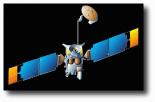 December 12: Present-day liquid water on Mars? NASA's Mars Global Surveyor spacecraft shows features that suggest there may be current sources of liquid water at or near the surface of the planet.
December 12: Present-day liquid water on Mars? NASA's Mars Global Surveyor spacecraft shows features that suggest there may be current sources of liquid water at or near the surface of the planet.
 New Images Suggest Present-day Source of Liquid Water on Mars New Images Suggest Present-day Source of Liquid Water on Mars , NASA's Astrobiology Institute, 12 December 2000.
 Life on Mars! is the related CA webpage. Life on Mars! is the related CA webpage.
December 11: Another Indian balloon will sample the high atmosphere. It will be launched at midnight tonight from the national balloon facility in Hyderabad. The experiment will collect air samples from heights of 10 to 35 km and bring them back eight hours later in sixteen super-cooled sterilised containers. A similar balloon launched in April found unfamiliar bacteria at 16 kilometers; this mission may help determine whether such bacteria are extra-terrestrial. We wonder if, in addition to gene sequencing, the bacteria could be checked for unearthly isotope ratios. [Thanks, CC-Net.]
 'Life-from-space' balloon ready for launch, The Times of India, 11 December 2000. 'Life-from-space' balloon ready for launch, The Times of India, 11 December 2000.
 An Atmospheric Test of Cometary Panspermia is the related CA webpage. An Atmospheric Test of Cometary Panspermia is the related CA webpage.
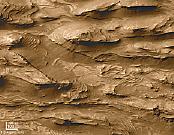 December 3:
December 3: Ancient sea or lake beds on Mars? Pictures from the Mars Global Surveyor apparently reveal sedimentation that would most likely have formed under a large body of water. Previous evidence for water, even oceans on Mars was known, but the sharp new photos of sediments strengthen the case. The full story will be published in the December 8 issue of Science. [Thanks, Barry DiGregorio.]
 Dried-up sea beds found on Mars, by Jonathan Leake, The Sunday Times, 3 December 2000. Dried-up sea beds found on Mars, by Jonathan Leake, The Sunday Times, 3 December 2000.
 Sedimentary Mars, Science@NASA, 4 December 2000. Sedimentary Mars, Science@NASA, 4 December 2000.
 MOC Images Suggest Early Mars History is Recorded in Sedimentary Rocks, MGS MOC Releases MOC2-259 to MOC2-265, 4 December 2000. MOC Images Suggest Early Mars History is Recorded in Sedimentary Rocks, MGS MOC Releases MOC2-259 to MOC2-265, 4 December 2000.
 Scientists Set to Survey Ancient Water Evidence, SpaceDaily.com, 4 December 2000. Scientists Set to Survey Ancient Water Evidence, SpaceDaily.com, 4 December 2000.
 Mars Home to Ancient Lakes, by Robert Roy Britt and Andrew Bridges, Space.com, 4 December 2000. Mars Home to Ancient Lakes, by Robert Roy Britt and Andrew Bridges, Space.com, 4 December 2000.
 Major Mars Discovery to be Announced at Dec. 7 Science Briefing, NASA News release N00-058, 1 December 2000. Major Mars Discovery to be Announced at Dec. 7 Science Briefing, NASA News release N00-058, 1 December 2000.
 Michael C. Malin and Kenneth S. Edgett, "Sedimentary Rocks of Early Mars" [abstract], p 1927-1937 v 290 Science, 8 December 2000. Michael C. Malin and Kenneth S. Edgett, "Sedimentary Rocks of Early Mars" [abstract], p 1927-1937 v 290 Science, 8 December 2000.
 Life on Mars! is the related CA webpage. Life on Mars! is the related CA webpage.
December 2: Lunar meteorites confirm intense bombardment 3.9 billion years ago. The first evidence for this "cataclysm" was based on the analysis of moon rocks returned by missions of the Apollo program. The new study, using four meteorites that fell to Earth from the moon's back side, was made by cosmochemists from the University of Arizona, Tucson. They write, "The lack of impact melt older than 3.92 Ga supports the concept of a short, intense period of bombardment in the Earth-moon system at ~3.9 Ga. This was an anomalous spike of impact activity on the otherwise declining impact-frequency curve." The cause of this "late heavy bombardment" is still unknown. In commentary Richard Kerr notes, "On Earth, the same bombardment would have intervened in the evolution of life, perhaps forcing it to start all over again."
 B. A. Cohen, T. D. Swindle and D. A. Kring, "Support for the Lunar Cataclysm Hypothesis from Lunar Meteorite Impact Melt Ages" [abstract], p 1754-1756 v 290 Science, 1 December 2000. B. A. Cohen, T. D. Swindle and D. A. Kring, "Support for the Lunar Cataclysm Hypothesis from Lunar Meteorite Impact Melt Ages" [abstract], p 1754-1756 v 290 Science, 1 December 2000.
 Richard A. Kerr, "Beating Up on a Young Earth, and Possibly Life" [summary], p 1677 v 290 Science, 1 December 2000. Richard A. Kerr, "Beating Up on a Young Earth, and Possibly Life" [summary], p 1677 v 290 Science, 1 December 2000.
 Lunar meteorites reveal life's troubles, by David Whitehouse, BBC News Online, 30 November 2000. Lunar meteorites reveal life's troubles, by David Whitehouse, BBC News Online, 30 November 2000.
 Lunar Meteorite Ages Strongly Support Lunar Cataclysm, by Lori Stiles, The University of Arizona, 30 November 2000. Lunar Meteorite Ages Strongly Support Lunar Cataclysm, by Lori Stiles, The University of Arizona, 30 November 2000.
 ...Life Survived Early Bombardment, by Robert Roy Britt, Space.com, 7 December 2000. ...Life Survived Early Bombardment, by Robert Roy Britt, Space.com, 7 December 2000.
 ...Cataclysm That Resurfaced the Earth ...3.9 Billion Years Ago Was Caused By Asteroids, Not Comets ...Cataclysm That Resurfaced the Earth ...3.9 Billion Years Ago Was Caused By Asteroids, Not Comets , by Julieta Gonzalez, UANews.org, 28 Feb 2002.
 25 Jan 2018: Late heavy bombardment reconsidered. 25 Jan 2018: Late heavy bombardment reconsidered.
November 30: Recent research and discussion of panspermia.
 Cambridge Conference Network - 30 November: 13 articles related to panspermia and early life. Cambridge Conference Network - 30 November: 13 articles related to panspermia and early life.
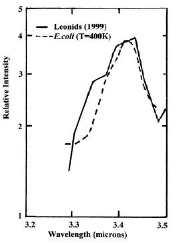
November 27: Leonid meteor reveals spectral signature of bacteria? Wickramasinghe and Hoyle say that a broad 3.4 micrometer feature in the spectrum of a fireball created 83 kilometers high by a Leonid meteor matches the emission spectrum of bacteria at 400K. Perhaps mesospheric bacteria were heated by the passing meteor. Bacteria at such altitude would have to have been recently deposited there from space.
 A bacterial "fingerprint" in a Leonid meteor train, by Chandra Wickramasinghe and Fred Hoyle, 24 November 2000. A bacterial "fingerprint" in a Leonid meteor train, by Chandra Wickramasinghe and Fred Hoyle, 24 November 2000.
 Alien Microbe Reported Found in Earth's Atmosphere, by Robert Roy Britt, Space.com, 27 November 2000. Alien Microbe Reported Found in Earth's Atmosphere, by Robert Roy Britt, Space.com, 27 November 2000.
 CCNet - 27 November and 28 November — The scholarly Cambridge Conference Network notices and discusses these recent reports. CCNet - 27 November and 28 November — The scholarly Cambridge Conference Network notices and discusses these recent reports.
 Comets... is a related CA webpage. Comets... is a related CA webpage.
 ...Interstellar Dust is a related CA webpage. ...Interstellar Dust is a related CA webpage.
November 23: Alien bacteria in the high atmosphere? A balloon experiment launched by the Indian Space Research Organization has apparently found bacteria unlike anything known on Earth. Elaborate precautions against contamination were part of the experiment from its beginning, but surface bacteria that may have wafted 16 kilometers high are not yet ruled out. Chandra Wickramasinghe is the source for the story in London's Daily Mail of 22 November. [Thanks Mike Peabody and Pete Simpson.]
 Scientists report 'alien' life Scientists report 'alien' life , United Press International, 22 November 2000.
 Scientist's extraordinary claim: Alien microbe discovered, Astrobiology News from Ames Research Center, 22 November 2000. Scientist's extraordinary claim: Alien microbe discovered, Astrobiology News from Ames Research Center, 22 November 2000.
 Scientists discover possible microbe from space, CNN.com, 22 November 2000. Scientists discover possible microbe from space, CNN.com, 22 November 2000.
 An Atmospheric Test of Cometary Panspermia is the related CA webpage. An Atmospheric Test of Cometary Panspermia is the related CA webpage.
November 23: Monad to Man: The Concept of Progress in Evolutionary Biology. In mainstream evolutionary science today, progress is considered a naive, mistaken notion. To us, progress in the many steps from prokaryotes to primates is entirely obvious; the mainstream position baffles us. That's why we wanted to read this scholarly 1996 book by a well-credentialed opponent of progress, Michael Ruse.
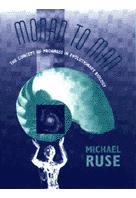
With thorough research Ruse sets out to demonstrate that evolutionary progress is illusory and that those who believe in it do so for cultural reasons. For example, he cites the views of Ernst Mayr, who had written in 1982, "On almost any measure one can think of a squid, a social bee, or a primate is more progressive than a prokaryote." Ruse counters that progress can indeed be doubted, because complex forms often become extinct, and because "ancient forms (like trilobites) were more complex even possibly than humans" (p 416). He thinks Mayr's main problem is cultural: "In short, everything points to the conclusion that Mayr's thoughts on progress are a function of the biological milieu in which he grew up..." (p 419). Ruse reaches a similar conclusion about all other "progressionists." For example,
- "[Julian] Huxley's biological progressionism was embedded in his evolutionary humanism..." (p 338).
- "[Sewall] Wright's fuzzy attitude to the nature and aim of progress... [is] a reflection of Bergsonian thinking" (p 378).
- "[Theodosius] Dobzhansky was a biological progressionist because this position harmonized with and led into his religious or spiritual Progressionism" (p 400).
"There is nothing in the basic theory of natural selection that would suggest the idea of any kind of cumulative progress," George Williams wrote in 1966 (p 475). We agree and think the theory needs amending to accommodate the fact that progress has occurred. Ruse, however, cannot consider that possibility, saying, "It is important to stress that, however defined, advance comes about through the process of normal selection" (p 416). With nothing more, one must suppose that mere selection can produce cumulative progress, as Charles Darwin himself had somewhat reluctantly done. But Ruse says that here even Darwin was wrong (p 165).
The correct course for evolutionary biology, Ruse says, is to do away with the concept of progress entirely. He appovingly paraphrases Williams, "Progress of an ongoing kind is simply impossible" (p 475). Although ambivalent about Stephen Jay Gould, Ruse likes Gould's 1988 opinion of progress as a "noxious, culturally embedded, untestable, nonoperational, intractable idea that must be replaced if we wish to understand the patterns of history" (p 500). Finally, Ruse wonders, "Are we now witnessing the death throes of progressionism in professional evolutionary biology...?"
 | | Michael Ruse | |
We feel that progress in biological evolution is analogous to that in computers — later models come along that have new, or expanded, more powerful programs that give them features and capabilities that earlier models lack. We think the similar progress in the history of life on Earth is undeniable. Of course, a more precise definition of evolutionary progress would clearly be helpful now. (But a naive use of "complexity" seems adequate for Ruse when it serves his purpose — trilobites more complex than humans?)
We endorse the question that vexed Darwin and many others — how is evolutionary progress possible? In this book Michael Ruse laboriously contrives to dismiss this question as meaningless. Mainstream evolutionary science seems to go along with Ruse. What happened to common sense? We are as baffled as ever.
 Monad to Man, by Michael Ruse, Harvard University Press, 1996. Monad to Man, by Michael Ruse, Harvard University Press, 1996.
 What'sNEW, 12 June 2000 reports on an interview with Ernst Mayr. What'sNEW, 12 June 2000 reports on an interview with Ernst Mayr.
 Neo-Darwinism... is a related CA webpage. Neo-Darwinism... is a related CA webpage.
 Evolution vs Creationism is a related CA webpage. Evolution vs Creationism is a related CA webpage.
 The Second Law of Thermodynamics contains a discussion of evolutionary progress. The Second Law of Thermodynamics contains a discussion of evolutionary progress.
 Is Evolutionary Progress... Possible? is a related CA webpage. Is Evolutionary Progress... Possible? is a related CA webpage.
 November 17:
November 17: The TNA World, a new precursor to the RNA World, is proposed. An international team of biochemists have produced new nucleotides that can be joined to form a double helix and can be cross-paired with RNA or DNA strands. The new units, alpha-threofuranosyl nucleotides, are simpler than RNA or DNA ones, and so, in theory, they would be more easily produced in a prebiotic soup. The scientists report that TNA "warrants close scrutiny... in the context of the problem of RNA's origin."
In commentary, eminent origin-of-life researcher Leslie Orgel writes "It is hard to understand how... the monomeric components of RNA, could have formed de novo under the prebiotic conditions on the primitive Earth. Consequently, many recent discussions of chemical evolution... have emphasized the potential importance of informational polymers that are simpler than RNA.... These new results invite attempts to identify even simpler RNA analogs."
No evidence found in nature supports the existence of a TNA- or an RNA World, or any precellular life at all. Unsolved chemical ("hardware") problems for the RNA World and its variants have only become more numerous. Meanwhile, how strands of nucleotides might acquire encoded instructional meaning (the "software" problem) remains unanswered and almost forgotten among Darwinists. Of course we endorse basic biochemical research. But why are such tentative results deemed so noteworthy? [Thanks, Stan Franklin.]
 K.-U. Schöning, P. Scholz, S. Guntha, X. Wu, R. Krishnamurthy, A. Eschenmoser, "Chemical Etiology of Nucleic Acid Structure: The [alpha]-Threofuranosyl-(3'—>2') Oligonucleotide System" [abstract], p 1347-1351 v 290 Science, 17 November 2000. K.-U. Schöning, P. Scholz, S. Guntha, X. Wu, R. Krishnamurthy, A. Eschenmoser, "Chemical Etiology of Nucleic Acid Structure: The [alpha]-Threofuranosyl-(3'—>2') Oligonucleotide System" [abstract], p 1347-1351 v 290 Science, 17 November 2000.
 Leslie Orgel, "A Simpler Nucleic Acid" [summary], p 1306-1307 v 290 Science, 17 November 2000. Leslie Orgel, "A Simpler Nucleic Acid" [summary], p 1306-1307 v 290 Science, 17 November 2000.
 Life molecule's chemical origins, by Helen Briggs, BBC News Online, 17 November 2000. Life molecule's chemical origins, by Helen Briggs, BBC News Online, 17 November 2000.
 A TNA World, NASA's Astrobiology Institute, 12 March 2001. A TNA World, NASA's Astrobiology Institute, 12 March 2001.
 The RNA World is the related CA webpage. The RNA World is the related CA webpage.
 November 16:
November 16: ESA reports on Mars. The European Space Agency has a new Internet resource of twelve illustrated pages on aspects of Mars such as age, orbit, surface, and interior. [Thanks, Larry Klaes.]
 Mars science, European Space Agency. Mars science, European Space Agency.
 Life on Mars! is the related CA webpage. Life on Mars! is the related CA webpage.
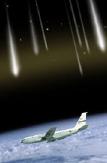 November 14:
November 14: Organics in Leonid Meteors — NASA scientists took samples from the atmosphere after the Leonid meteor storm in November 1999. They now report that organic compounds are abundant in the meteors and they are not destroyed by the heat of atmospheric entry. The scientists conclude that precursor materials for life could have been delivered to Earth by meteors. We notice that the findings would also support another conclusion — that evidence of cellular life is abundant in space.
The annual Leonid shower will be visible in the night sky especially in New England, 17-18 November. And NASA will again be monitoring it.
 Leonid Meteors Yield Rich Astrobiology Research Results, NASA Release 00-77AR, 13 November 2000. Also at Astrobiology News Briefs with graphics and links. Leonid Meteors Yield Rich Astrobiology Research Results, NASA Release 00-77AR, 13 November 2000. Also at Astrobiology News Briefs with graphics and links.
 Leonid Daily News, Leonid Multi-instrument Aircraft Campaign. Leonid Daily News, Leonid Multi-instrument Aircraft Campaign.
 Leonid Meteor Shower: Sowing the Seeds of Life?, by Robert Roy Britt, Space.com, 15 November 2000. Leonid Meteor Shower: Sowing the Seeds of Life?, by Robert Roy Britt, Space.com, 15 November 2000.
 New England Can Catch Leonids Glimpses Nov 17, SpaceDaily.com, 8 November 2000. New England Can Catch Leonids Glimpses Nov 17, SpaceDaily.com, 8 November 2000.
 Comets... is a related CA webpage. Comets... is a related CA webpage.
November 12: Evolution by Gene Duplication? A biologist and a computer scientist at the University of Oregon have analysed sequences from six eukaryotic species to study gene duplication. They conclude that genes are duplicated far more often than previously thought, and that most duplicated genes are subsequently eliminated. They believe that the remaining ones may help create new species by reproductively isolating different lineages.

Since 1970, when Susumo Ohno published Evolution by Gene Duplication, this mechanism has become part of Darwinian orthodoxy. If gene duplication can lead to speciation, as the study concludes, it would indeed promote genetic variation. But genetic variation is not the same as macroevolutionary progress, which requires lengthy new genetic programs. If gene duplication can produce them, one would expect a study like this one to detect evolutionary pathways connecting genes with quite different functions. Yet there is no mention of any evidence for such pathways. The only evolutionary pathways confirmed are between members of pairs with closely related functions. We think the ability of Darwinian evolution to produce sustained macroevolutionary progress in a genetically closed system still rests on weak support.
Studies such as this one are only possible now that so much genetic sequencing has been completed. We applaud the work and hope that similar studies will continue using an ever larger data base of sequenced genomes.
 Michael Lynch and John S. Conery, "The Evolutionary Fate and Consequences of Duplicate Genes" [abstract], p 1151-1155 v 290 Science, 10 November 2000. Michael Lynch and John S. Conery, "The Evolutionary Fate and Consequences of Duplicate Genes" [abstract], p 1151-1155 v 290 Science, 10 November 2000.
 Elizabeth Pennisi, "Twinned Genes Live Life in the Fast Lane" [abstract], p 1065-1066 v 290 Science, 10 November 2000. Elizabeth Pennisi, "Twinned Genes Live Life in the Fast Lane" [abstract], p 1065-1066 v 290 Science, 10 November 2000.
 Long and Thornton; Zhang et al.; Lynch and Conery, "Gene Duplication and Evolution" [text], p 1551 v 293 Science, 31 August 2001. Long and Thornton; Zhang et al.; Lynch and Conery, "Gene Duplication and Evolution" [text], p 1551 v 293 Science, 31 August 2001.
 Can Computers Mimic... Evolution? and Can Computers Mimic... Evolution? and
 Why Sex...? have more about Ohno. Why Sex...? have more about Ohno.
 November 9:
November 9: Ancient Bacteria in Salt Crystals on Mars? Following the recent revival of 250-million-year-old bacteria from a mineshaft in New Mexico, a Missouri biologist with NASA funding is actively pursuing the possibility that ancient microbial life could be preserved in the same manner on Mars.
 Research Could Pave Way For Discovery Of Life On Mars, SpaceDaily.com, 6 November 2000. Research Could Pave Way For Discovery Of Life On Mars, SpaceDaily.com, 6 November 2000.
 Life on Mars! is a related CA webpage. Life on Mars! is a related CA webpage.
 What'sNEW, 19 October tells about the revived ancient bacteria. What'sNEW, 19 October tells about the revived ancient bacteria.
 November 6:
November 6: Canolfan Astrobioleg Caerdydd — The Cardiff Center for Astrobiology — is being established. The interdisciplinary research program will deal broadly with 1) evidence for the existence of biomolecules and cells in the upper atmosphere as well as in comets and interstellar dust, 2) evidence for the existence of life molecules and processes in material recovered from space, and 3) the effect of space conditions on living systems. These studies will feed into investigations on the emergence and development of life in the context of evolving atmospheres on planetary bodies. This work will also provide information essential for the emergent discipline of space medicine.
The founders and principal investigators are Professor N. Chandra Wickramasinghe, Cardiff University and Professor Anthony K. Campbell, University of Wales College of Medicine. The unique combination of astronomy and molecular cell biology they provide will establish a facility capable of contributing to space missions probing for life on solar system bodies. In the immediate future, the Center intends to set up and equip a high containment laboratory at the University of Wales College of Medicine to investigate samples that are shortly to be received from balloon experiments being conducted by a team at ISRO, India.
Today, the new Center and the Cardiff Astronomical Society jointly sponsored an open lecture by Dr. Stuart A. Kingsley, Director of The Columbus Optical SETI Observatory.
 Cardiff Centre for Astrobiology, site maintained by N.C. Wickramasinghe. Cardiff Centre for Astrobiology, site maintained by N.C. Wickramasinghe.
 Optical SETI Public Talk in the United Kingdom, by Stuart A. Kingsley, 6 November 2000. Optical SETI Public Talk in the United Kingdom, by Stuart A. Kingsley, 6 November 2000.
 An Atmospheric Test of Cometary Panspermia is a related CA webpage. An Atmospheric Test of Cometary Panspermia is a related CA webpage.
 November 3:
November 3: Archaebacteria may produce methane underground, far from any oil. The archaebacteria have been found 1.5 to 4.5 km below the surface at temperatures of 30-80° C in solutions saturated with calcium, sodium and magnesium chlorides and sulfates.
 Archaebacteria Produce the Natural Gas, by Nadezhda V. Verkhovtseva, Moscow State University, Soil Science Faculty, 27 October 2000. Archaebacteria Produce the Natural Gas, by Nadezhda V. Verkhovtseva, Moscow State University, Soil Science Faculty, 27 October 2000.
 Can The Theory Be Tested is a related CA webpage (search for "methane"). Can The Theory Be Tested is a related CA webpage (search for "methane"). |